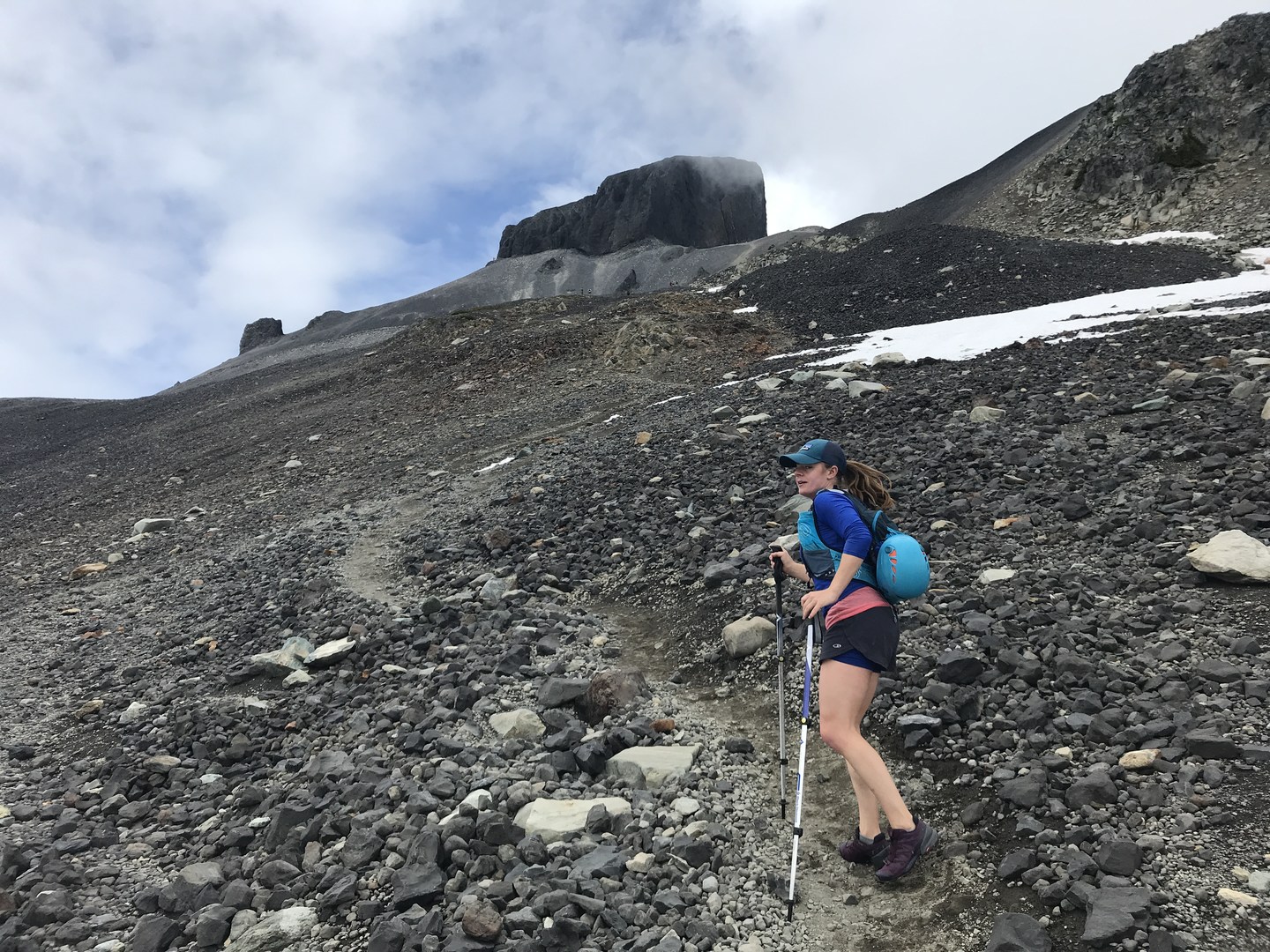You are here
The Black Tusk is one of the most well known peaks in the southwest BC area. On clear days, it's visible from the ferry crossing to Nanaimo. You can see its sharp needle on the highway. It is one of the main draws for novice skiers on Whistler, where skiers take the chair all the way up to the challenging Peak Chair area just to catch a glimpse of this magnificent spire.
Formed by a rapid volcanic event, The Black Tusk is hard to miss. From all almost all angles, it appears like a sharp spire, though in reality, it is more of a fin. Getting there requires hiking 14 kilometers in to the base of the spire along the same trail as Garabaldi Lake and Panorama Ridge. It's an incredibly popular trail, so expect lots of company. It is most often done in 2 days as it can be quite long for some.
The false summit is an incredibly popular scramble considering its difficulty. Matt Gunn's superb guidebook rates it as "difficult." For comparison, West Lion and Sky Pilot are considered "very difficult," and Golden Ears is moderate. With that said, the very loose rock that persists despite the frequent high traffic makes it more challenging than it might appear.
The route itself begins at the Rubble Creek parking lot about 30 minutes outside of Squamish north along Highway 99. The trail is a series of switchbacks that work their way up before getting less steep at a rest stop with a washroom. From here you get to a junction. You can proceed to Taylor Meadows direct, or head via the Garabaldi Lake. The Taylor Meadows option is more gentle, and gets you into the beautiful alpine meadows sooner. If you're planning to camp, this site is much closer, though a bit more mosquito-y than the Garabaldi Lake site. It can be nice to take the Taylor Meadows route on the way up, then choose the lakeside trail on the way down for a cool down swim.
Either way, you end up in the meadows fairly quick. The meadows are fairly gentle at first, before steepening a great deal as you make the climb up into the alpine proper. Here, there is often snow well into June and often July. It does get steep, so if you are planning to do this early in the season, be prepared for heat-triggered avalanches. Come prepared with the training for this type of terrain and leave very early so you are climbing the snow when it is frozen. Generally, by 10 a.m., the route softens, and avalanches become a greater risk.
When there isn't snow, it's a scree-slog up to the ridge with little respite. It's slippy and constantly moving, which can exhaust folks. Watch out for tumbling rocks as well. It's also often foggy in this area, so be prepared for potential navigation.
The trail tops out on a narrow ridge that heads toward the main spire itself. If you find this area a little exposed and scary, the Black Tusk is perhaps not a good scramble to continue. It only gets much harder and more exposed. This is a good place to put your helmet on as rock fall is common. The trail diverges around the base of the Tusk, following its steep face. Follow this until you reach the narrow point at the very end. There are three gullies here. Two look vaguely doable. The third, southwestern-most gully is the one to climb. You will often see other people clustered here, and it's a good idea to watch out for rock as there are many inexperienced scramblers. Helmets are essential.
The first move is the hardest as it is slightly overhung. It can be tricky to see your feet, and the hand holds are often loose. Look for solid holds and make your way up; it's a solid class five move, but it's the only one required. From here, it is tricky class four climb (requiring two hands), but much easier as the rock isn't especially steep, and you're climbing in a gully that reduces the feeling of exposure. Top out on a little ledge. Move upward and to the right above this ledge on class three rock (requiring one hand). Very quickly, you will see a narrow gully you can walk up. At the top of this gully, you will need to pull yourself up and out of it; it is perhaps a class four move. From here, hike up scree under loads of exposure.
The views are lovely and very enjoyable from the false summit. The real summit is a short distance away, but it is seldom climbed. It requires full climbing gear to ascend. While not especially hard, perhaps 5.6, it is exceedingly loose, and there is little in the way of protection except for prayer pitons. Descend the same way you came. There aren't really any stable rocks to set up a rappel. Even rappel rings haven't been installed due to the poor quality rock.
Logistics + Planning
Current Weather: Powered by Dark Sky























Comments
Sign In and share them.